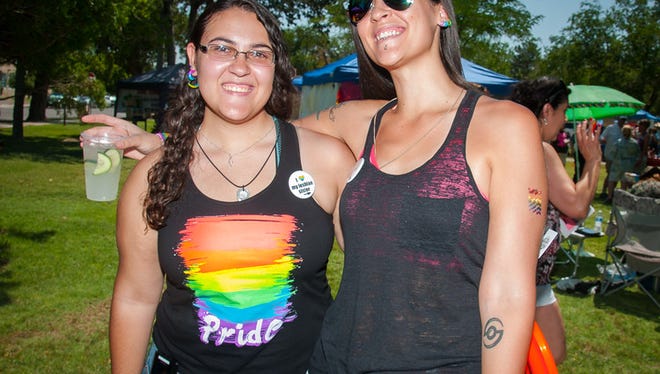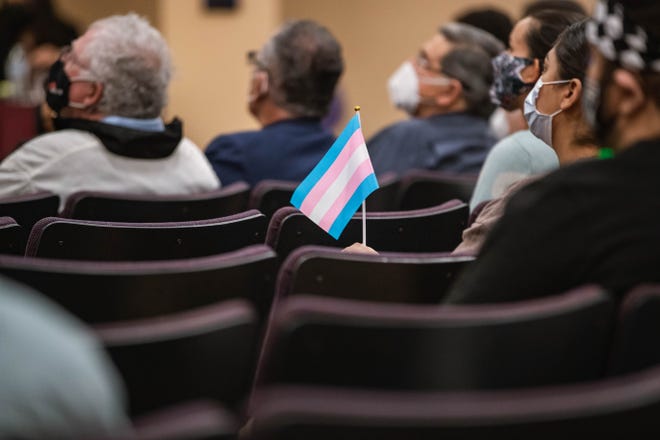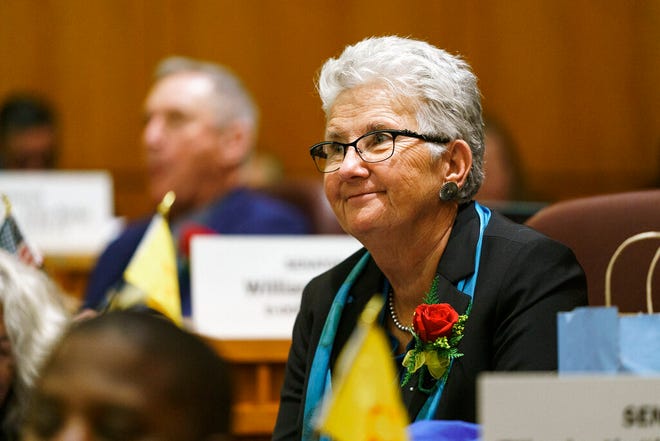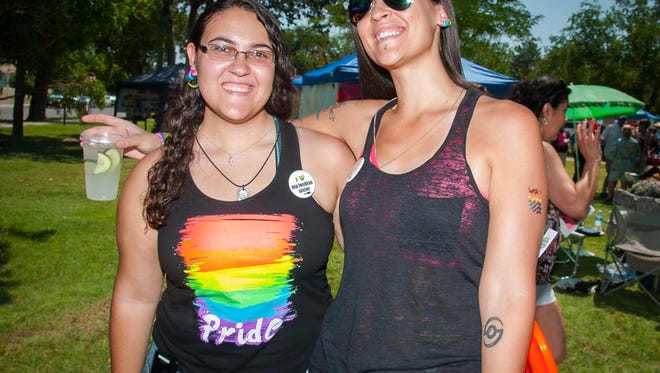LAS CRUCES – How many LGBTQ people reside in New Mexico? At present, experts and advocates say there is not sufficient data, but that could change as soon as the next year or two.
The abbreviation stands for lesbian, gay, bisexual, transgender and queer, although some people prefer “questioning” as a reference to people ambivalent about their sexual orientation or gender identity. The abbreviation sometimes includes a plus sign to represent additional identifiers pertaining to sexual identity.
A Gallup poll released in February found that 7.1 percent of adult respondents in the United States identified themselves among LGBTQ communities. That figure has been growing rapidly over the years and has doubled since Gallup started conducting its annual survey in 2012, driven largely by increasing rates among millennials and Generation Z.
Marshall Martinez, director of Equality of New Mexico, said getting an accurate count of LGBTQ people in New Mexico is lagging and that the methods currently active are likely underestimating the true population.

In an interview, Martinez said relevant data from the 2020 U.S. Census was not yet available; but he anticipated a “pretty severe undercount” of LGBTQ people due not only to the COVID-19 pandemic and how it affected the decennial count, but also the method by which such populations have been counted by census workers.
He explained: “If the census taker comes to my house, asks if I’m married or single, I say married. They ask if I’m married to the person who lives in the house. It kind of assumes that if I’m married to the other man who lives in my house, I must be gay. That’s a super undercount for a number of reasons, so we really don’t refer to it.”
Many gay couples, he said, are not married. The data may also be influenced by the willingness of participants to disclose that information about themselves or whether the census worker even asks.
While comprehensive population data are not available, Martinez pointed to a pair of statewide surveys that have proven useful.
He pointed to the New Mexico Youth Risk and Resiliency Survey, which is taken at select middle and high schools in every school district every other year. Students spent a single class period providing voluntary data about alcohol, tobacco and drug use, violence, suicidality, sexual activity, diet and other health-related information as well as responses about family, school and community relationships.
Martinez said the survey added questions about sexual orientation and gender identity a few years ago. The most recent statewide LGB Youth Report is from 2017 based on surveys administered in 2015, with the 2019 report still pending.
Another tool is the New Mexico Department of Health’s Behavioral Risk Factor Surveillance System, which conducts telephone surveys gathering demographic data used to assess behavioral health behaviors and risks across the state.

Health department spokesman David Morgan said the most recent BRFSS data, from 2018 to 2020, estimated 85,388 New Mexico adults, or 5.2 percent of the population, were “lesbian, gay, bisexual, or other,” while 13,137 or 0.8 percent were transgender or nonbinary.
While helpful, Martinez said telephone surveys yield limited data.
“They call landlines and try to gather information where they can but, as with political polls and everything else, it can be difficult to reach people,” he said. “Also, oftentimes when you call a queer person who has a landline they’re typically of a generation where outing yourself to someone over the phone randomly does not feel super safe. So we know there’s an undercount there.”
Consistent with the trend reported by Gallup, Martinez said youth survey participants identify as LGBTQ at far higher rates than older generations.
“There’s no way that in one generation there’s suddenly 8 percent more people who become queer or trans,” he continued. “What we determined from that is that it’s just harder to count older queer and trans folks because of the fear of coming out.”
From USA Today: Why do so many Gen Zers identify as LGBTQ?
In August of last year, Gov. Michelle Lujan Grisham issued an executive order directing state departments to collect voluntary and anonymous information from the public about their sexual orientation and gender identity in order to assess public health disparities and service gaps among that population group.
Lujan Grisham stated at the time, “If we are to address inequities that LGBTQ+ New Mexicans experience in their interactions with state government, we must first have the information about where those breakdowns are occurring.”
The executive order followed an unsuccessful attempt to codify such efforts in statute.
During the 2021 legislative session, state Sen. Carrie Hamblen, D-Las Cruces, introduced a bill that would have required that data to be gathered across state agencies and departments and then reported, without any personal identifying information, to the Legislature and the public. According to a legislative analysis, the bill would not have required reporting demographic data more locally than by ZIP code.
“When you go to get your flu shot, you fill out a little form for the Department of Health and are asked your age, your race, your ethnicity, your gender and all of those things,” Martinez explained. “They do that so that they can figure out, ‘Oh, Hispanic men in their 40s are not getting the flu shot. Why not?'”
Martinez projected the improved data sets would begin to develop in 2023 at the earliest, given the time required to roll out new processes and encourage participation.
“If we ask those questions in all of the agencies or departments, we start to actually get that more accurate population count,” he said, “because the chances are almost every New Mexican interacts with some state agency or department in some way.”
The LGBTQ demographic information would help health officials track trends in those groups as well, related to the whole range of state services including law enforcement and criminal justice, he said.
The bill passed the state Senate but did not make it the House floor. Had it become law, some agencies said there would be costs involved in collecting the required information. The state Department of Health, for instance, estimated required upgrades for its information systems and protocols at $111,000, while the state Human Services Department said it would cost over $142,000 and require a dedicated part-time employee.
In an interview, Hamblen said the bill would reintroduced in a future session, since Lujan Grisham’s executive order could be undone by a future governor. Lujan Grisham is seeking a second and final term, due to term limits, in the 2022 general election.
Hamblen credited state Sen. Liz Stefanics, D-Cerillos, as well as anti-discrimination laws in New Mexico she described as among the strongest in the United States, for paving the way for Senate passage of her bill as well as a measure barring “gay panic” or “trans panic” criminal defenses that was sponsored by state Sen. Jacob Candelaria, an independent former Democrat from Albuquerque.

Stefanics was the state’s first legislator open as a lesbian when she took office in 1993. After losing a primary challenge in 1996, Stefanics served as a Santa Fe County Commissioner before returning to the state Senate in 2017.
Hamblen said Stefanics, Candelaria and advocates of equality for LGBTQ residents have long carried the message to lawmaker and the public that “there is a really good chance that somebody they love is a member of this community.”
Hamblen ran for office in 2020 as an open lesbian in order, she argued, to increase LGBTQ representation in Santa Fe.
“When I was younger, I didn’t see anybody who looked like me, or who was similar to me in positions of leadership and influence,” she said. “I think in those positions of influence and leadership, it’s so important for people to see people like themselves.”
Algernon D’Ammassa can be reached at 575-541-5451, adammassa@lcsun-news.com or @AlgernonWrites on Twitter.








